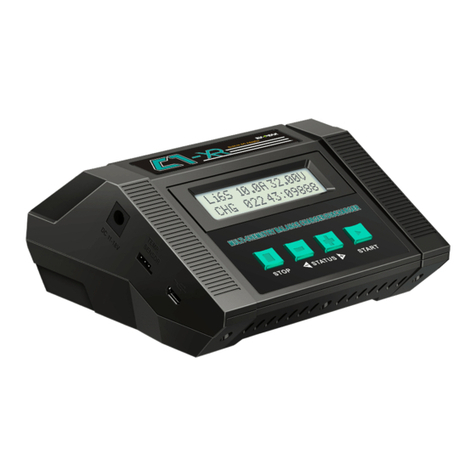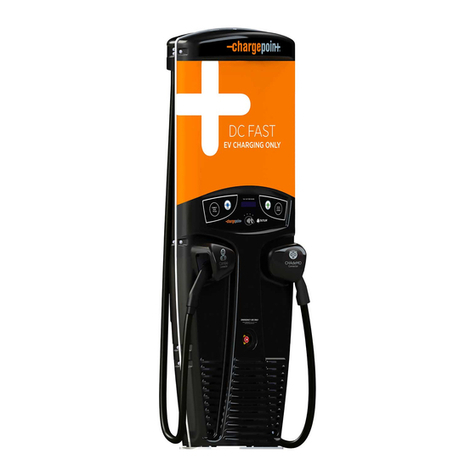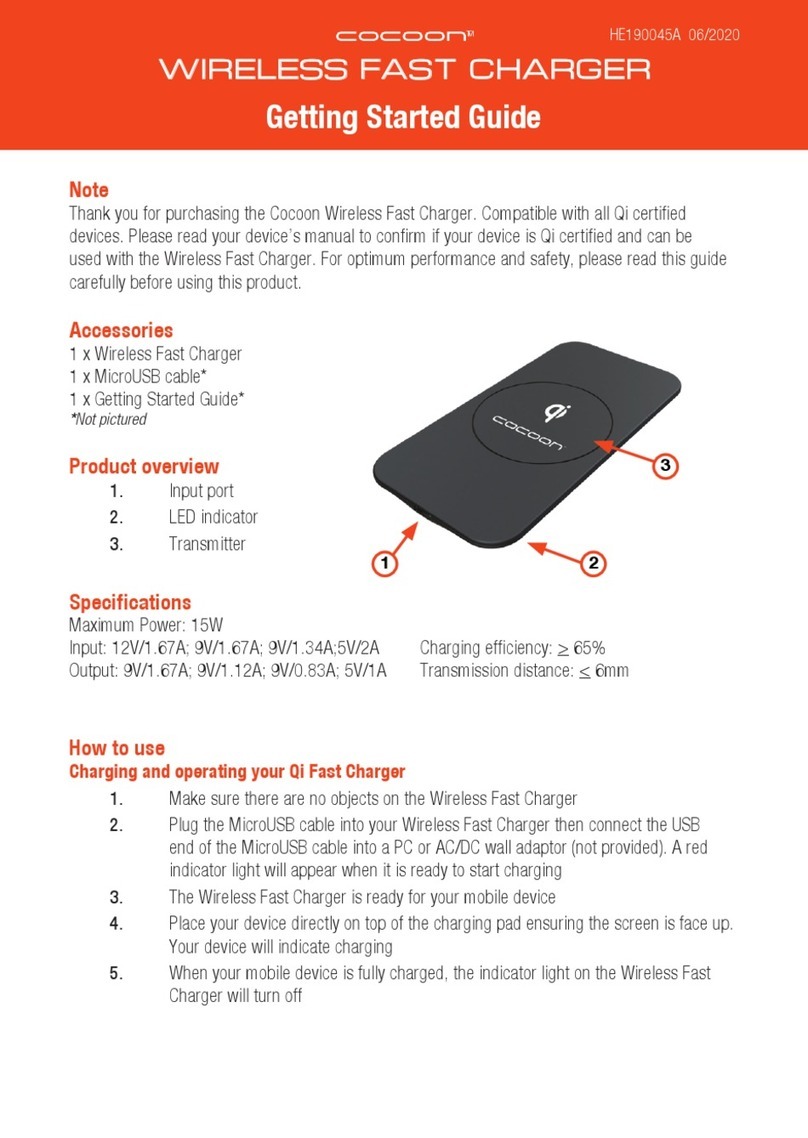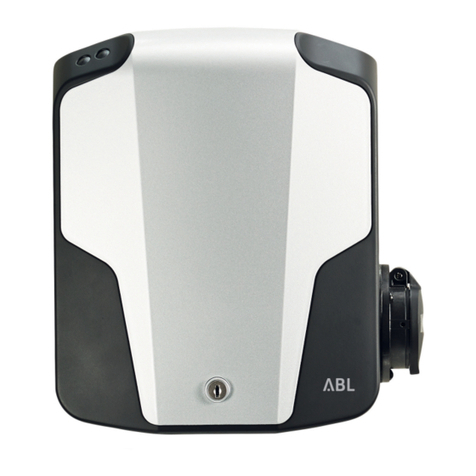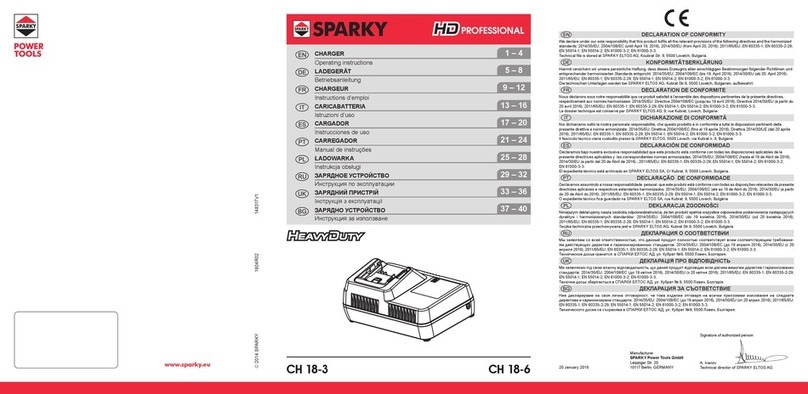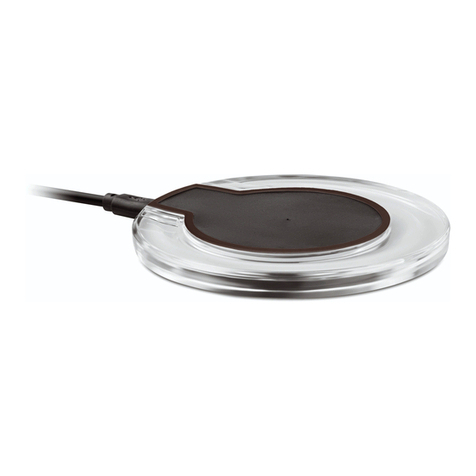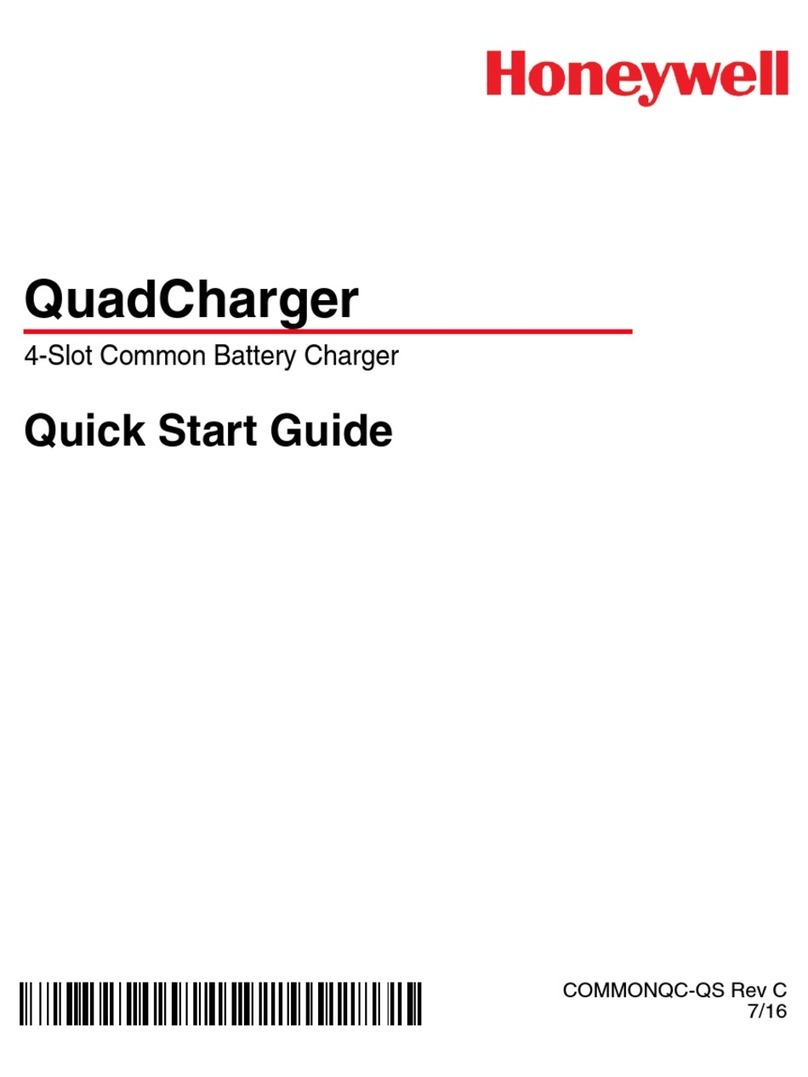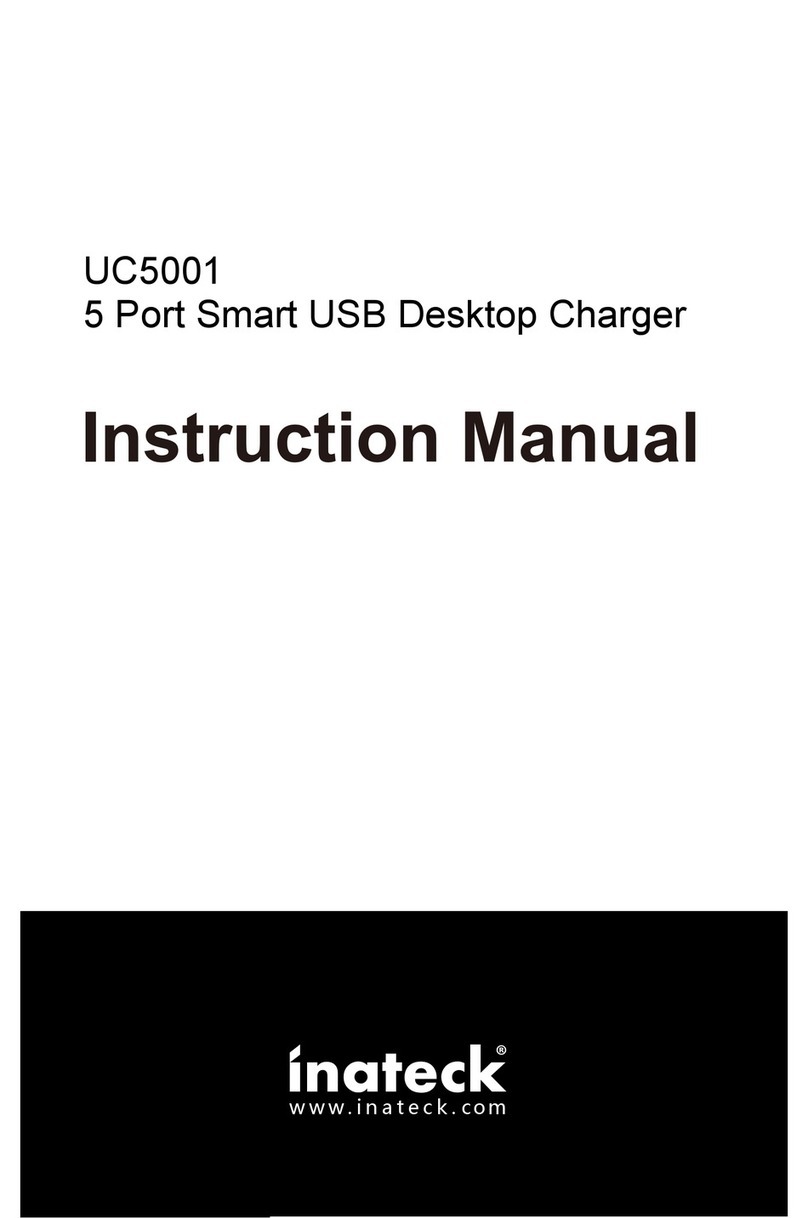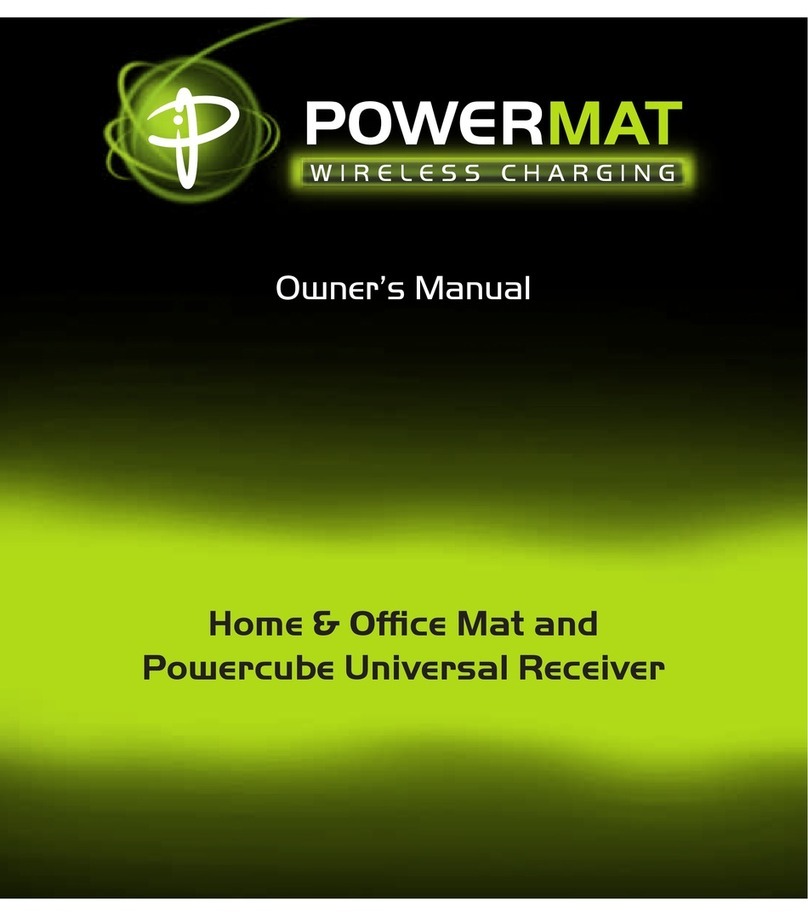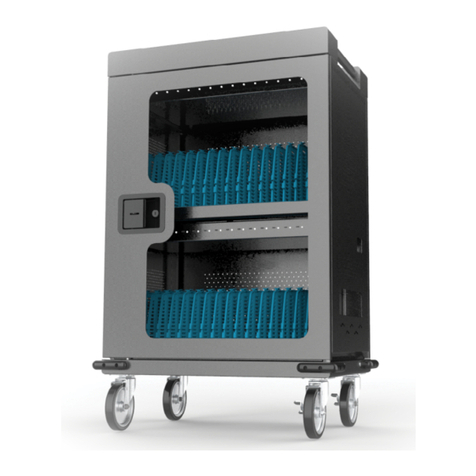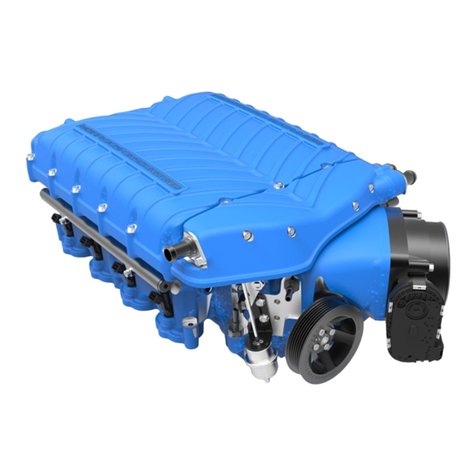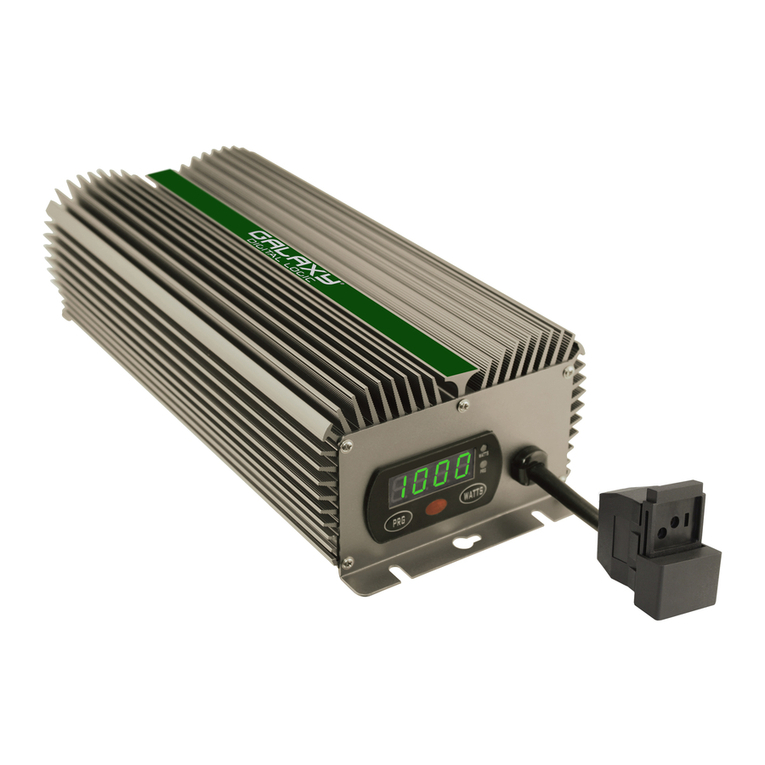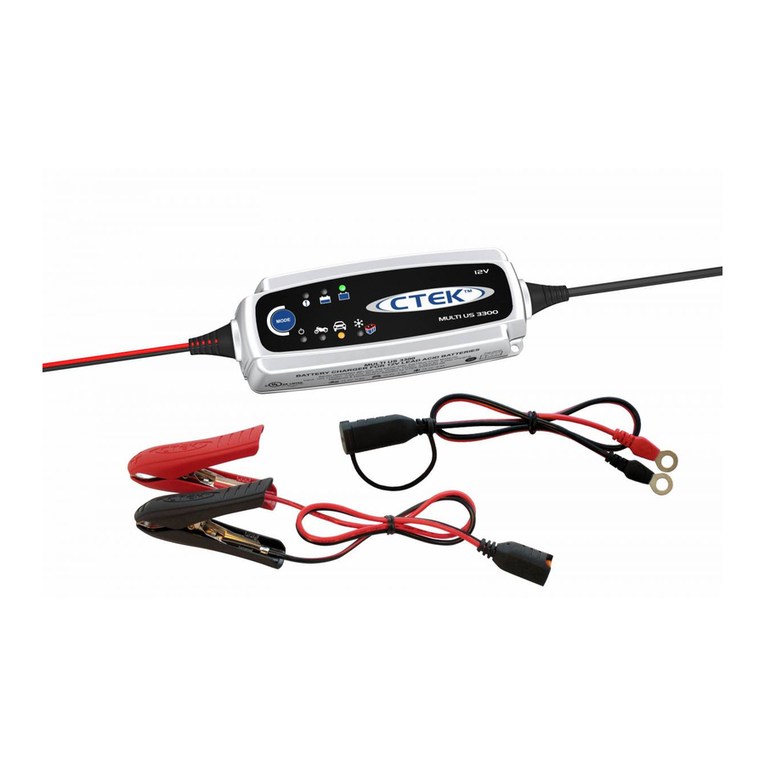EV-PEAK R1 User manual

Touch screen fast charger / discharger
Instruction manual
R1

TABLE OF CONTENTS
INTRODUCTION............................................................................................. 01
SPECIFICATION.............................................................................................. 03
MAIN FEATURES............................................................................................ 04
WARNING AND SAFETY NOTES..................................................................... 06
PROGRAM FLOW CHART............................................................................... 09
PROGRAM DESCRIPTION.............................................................................. 10
OPERATING PROGRAM.................................................................................. 11
Touch Screen Operation........................................................................... 11
Connection............................................................................................... 12
CHARGING PROGRAM.............................................................................. 13
DISCHARGE PROGRAM............................................................................. 15
Storage Program for Lithium Battery...................................................... 17
BATTERY MEMORY.................................................................................... 18
Data view................................................................................................... 19
LITHIUM BATTERY BALANCER.................................................................. 20
Digital Power............................................................................................. 21
Forming Charge........................................................................................ 22
SYSTEM SETTING........................................................................................... 23
ERROR MESSAGE........................................................................................... 26
AUTHENTICATION INFORMATION................................................................ 28
WARRANTY..................................................................................................... 29

INTRODUTION
01
These operating instructions are designed to ensure that you quickly
become familiar with its functions. It is therefore important that you read
right through the Operating instructions, Warning and Safety Notes before
you attempt to use your new charger for the first time.
R1 integrates battery technology together with touch-operated system.
It is equipped with a 128*64 pixel resistive touch screen, which plays very
important role in the entire system. Every operating procedure and status
change can be shown on this screen, making the operating procedures very
intuitive. When the battery is working, you can directly check the battery
capacity, battery voltage, charging time and internal resistance on the
screen. Additionally, the entire charging procedures can be recorded and
generated into a charging curve for you to check on the screen.
R1 comes with a memory module. Users can edit and save parameters
of different batteries. Once the battery parameters are edited, the shortcut
for parameters will be generated on the screen, which provides a simple
on-click interface for users.
R1 can be powered up with DC 11-24V output power supply, suitable
for use with LiPo / LiFe / LiHV / Li-lon / NiMH / NiCd / Pb battery, maximum
20A charge current and maximum 200W charge power. Integrated
high-performance micro processor and high-efficient cooling system,
control the charger always under a safety temperature situation.
Please BE SURE to read these INSTRUCTIONS, WARNING and SAFETY
NOTES before you use the charger for the first time
It can be dangerous to mishandle batteries and battery chargers, as
there is always a risk of batteries catching fire and exploding.
Please read this entire operating manual completely and attentively
before using this product, as it covers a wide range of information on
operating and safety. Or please do use this product in company with a
specialist.

INTRODUTION
02
1. DC Input
2. Temperature Sensor Port
3. Micro-USB port for firmware upgrade
4. Touch screen
5. 1- 6S cells balance socket
6. Main Output
7. Cooling fan
134
56 7
2

SPECIFICATIONS
03
● DC input Voltage: 11-24V
● Control: Touch system
● Backlight: Blue
● Dimension: 120 x102 x46 mm
● Charge current: 0.1A-20.0A
● Balance tolerance:±0.01V
● Regenerative discharge power: max.300W
● Regenerative discharge current: 0.1-20.0A
● Charge power: max. 200W
● Memory: 20 different charge/discharge profiles
● External port: 1-6S Balance Socket-XH
Temperature probe socket
Battery Socket XT60
Micro USB for PC
● Battery Types/cells: LiPo/Lilon/LiFe/LiHV: 1-6S
NiMH/NiCd: 1-15cells
Pb: 2-24V
● Charge Voltage: LiPo: 4.18-4.22V/cell
Lilon: 4.18-4.20V/cell
LiFe: 3.68-3.80V/cell
LiHV: 4.30-4.40V/cell
● Discharge cut-off voltage: NiMH/NiCd: 0.1-1.1V/cell
LiPo: 3.0-3.3V/cell
Lilon: 2.9-3.2V/cell
LiFe: 2.6-2.9V/cell
LiHV: 3.1-3.4V/cell
Pb: 1.8V
● Display Type: LCD resistive touch screen
● Cooling system: cooling fan
● Weight: 450g
● Safety timer: 1-720min or turn off
● Discharge current: 0.1A-20.0A
● Discharge power: max. 30W

MAIN FEATURES
04
Touch System
With the graphic touch controlled interface, the resistive touch LCD
screen intuitively displays every charging status & information, which makes
the operating procedures very easy. Users can enjoy a more convenient and
comfortable “touch” experience.
Optimized Operating Software
R1 simplifies and optimizes the operating procedures for users, it can
maximumly protect your battery safety, and prolong the lifetime of the
battery effectively; what's more, the charger allows users to self-define the
charging parameters, so that you can configure other charging parameters
according to your own requirements.
Charging Status Monitor
When the charger is working, you can check the charging capacity,
battery voltage, charging time and internal resistance on the screen. More
important, the voltage curve can be displayed on the screen, so you can
monitor the charging status.
Internal Independent Lithium Battery Balancer
R1 Changer employs an individual-cell-voltage balancer. It isn’t neces.
sary to connect an external balancer for balance charging.
Balancing Individual Cells Battery Discharging
During the process of discharging, R1 can monitor and balance each cell
of the battery individually. Error message will be indicated and process will
be ended automatically if the voltage of any single one cell is abnormal.
Fast and Storage Mode of Lithium battery
Purposes to charge lithium battery varies, “fast ” charge reduce the
duration of charging, whereas “store” state can control the final voltage of
your battery, so as to store for a long time and protect useful time of
thebattery
Lndependent Balance function
When the battery performance declines and vlitage difference
increas-es, the balance function of charger will to work. The equalizer
circuit will work independently and reduce the voltage difference to below
0.01V, which can prolong the lifetime of battery and reduce risks due to
over discharge.

MAIN FEATURES
05
Memory Preset
The charger can store up to 0 different charge/discharge profiles for
your convenience. You can keep the data pertaining to program setting of
the battery of continuous charging or discharging. Users can call out these
data at any time without any special program setting.
Terminal Voltage Control (TVC)
The charger allows user to set the charge/dischareg and voltage.
Capacity Limit
The charging capacity is always calculated as the charging current
multiplied ba time. if the charging capacity exceeds the limit, the process
will be terminated automatically when you set the maximumvalue.
Processing Time Limit
You can also limit the maximum process time to avoid any possible
defect.
PC Control Software ”Charge Master”
Please download the ''PC Monitor” software on our website:
www.ev-peak.com. There is mini USB port in the charge which can be used
to connect it to the PC. You need optional USB cable (USB A Male to Mini B
Male) which is not included in the package. The free “Charge Master”
software gives you unparalleled ability to operate the charger through your
computer. You can update firmware from “Charge Master”.
Inner Resistance of Battery Pack
Measure Inner resistance of battery pack inclusively all connections and
leads.
Regenerative Discharging
The user can transfer the battery energy to the car battery or other
energy storage equipment.

WARNING AND SAFETY NOTES
06
These warnings and safety notes are particularly
important. Please follow the instructions for
maximum safety; otherwise the charger and the
battery can be damaged or at worst it can cause
a fire.
Never leave the charger unattended when it is connected to its power
supply. If any malfunction is found, TERMINATE THE PROCESS AT ONCE
and refer to the operation manual. If any malfunction is found,
TERMINATE THE PROCESS AT ONCE and refer to the operation manual.
Keep the charger well away from dust, damp, rain, heat, direct
sunshine and vibration. Never drop it.
The allowable DC input voltage is 11~24V DC.
This charger and the battery should be put on a heat-resistant,
noninflammable and nonconductive surface. Never place them on a car
seat, carpet or similar. Keep all the inflammable volatile materials away
from operating area.
Make sure you know the specifications of the battery to be charged or
discharged to ensure it meets the requirements of this charger. If the
program is set up incorrectly, the battery and charger may be damaged.
It can cause fire or explosion due to overcharging.
To avoid short-circuiting between the charge lead, always connect the
charge cable to the charger first, then connect the battery. Reverse the
sequence when disconnecting.

WARNING AND SAFETY NOTES
07
Standard Battery Parameters
3.7V/cell
3.7V/cell
4.2V/cell
3.8V/cell
≦1C
3.6V/cell
4.1V/cell
≦1C
3.3V/cell
3.6V/cell
3.3V/cell
≦4C
3.0-3.3V/cell 2.9-3.2V/cell 2.6-2.9V/cell
1.2V/cell
1.5V/cell
n/a
1C-2C
1.2V/cell
1.5V/cell
n/a
1C-2C
2.0V/cell
2.46V/cell
n/a
≦0.4C
0.1-1.1V/cell 0.1-1.1V/cell
1.8V/cell
3.7V/cell
4.35V/cell
3.85V/cell
≦1C
3.1-3.4V/cell
Nominal
Voltage
Max Charge
Voltage
Storage
Voltage
Allowable
Fast Charge
Min.Discharge
Voltage
LiPo LiIon LiFe NiCd MiMH PbLiHV
※
Be very careful to choose the correct voltage for different types of
battery otherwise you may cause damage to the batteries. Incorrect
settings could cause the cells to fire or Explode.
Never attempt to charge or discharge the following types of
batteries
● A battery pack, which consists of different types of cells (including
different manufacturers)
● A battery that is already fully charged or just slightly dis charged.
● Non-rechargeable batteries (Explosion hazard).
● A faulty or damaged battery.
● A battery fitted with an integral charge circuit or a protection circuit.
● Batteries installed in a device or which are electrically linked to other
components.
● Batteries that are not expressly stated by the manufacturer to be
suitable for the currents the charger delivers during the charge
process.
Please bear in mind the following points before commencing
charging
● Did you select the appropriate program suitable for the type of
battery you are charging?
● Did you set up adequate current for charging or discharging?
● Have you checked the battery voltage? Lithium battery packs can be
wired in parallel and in series, i.e. a 2 cell pack can be 3.7V (in parallel)
or 7.4V (in series).
● Have you checked that all connections are firm and secure? Make
sure there are no intermittent contacts at any point in the circuit.

WARNING AND SAFETY NOTES
08
Charging
During charge process, a specific quantity of electrical energy is fed into
the battery. The charge quantity is calculated by multiplying charge current
by charge time. The maximum permissible charge current varies depending
on the battery type or its performance, and can be found in the information
by the battery manufacturer. Only batteries that are expressly stated to be
capable of quickcharge are allowed to be charged at rates higher than the
standard charge current.
Connect the battery to the terminal of the charger: red is positive and
black is negative. Due to the difference between resistance of cable and
connector, the charger can not detect resistance of the battery pack, the
essential requirement for the charger to work properly is that the charge
lead should be of adequate conductor cross-section, and high quality
connectors which are normally goldplated should be fitted to both ends.
Always refer to the manual by battery manufacturer about charging
methods, recommended charging current and charging time. Especially,
the lithium battery should be charged according the charging instruction
provided by the manufacturer Strictly.
Attention should be paid to the connection of lithium battery espe cially.
Do not attempt to disassemble the battery pack arbitrarily. Please get
highlighted that lithium battery packs can be wired in parallel and in series.
The main purpose of discharging is to clean residual capacity of the
battery, or to reduce the battery voltage to a defined level. The same
attention should be paid to the discharging process as charging. The final
discharge voltage should be set up correctly to avoid deep-dis-charging.
Lithium battery can not be discharged to lower than the minimum voltage,
or it will cause a rapid loss of capacity or a total failure.
Generally, lithium battery doesn't need to be discharged. Please pay
attention to the minimum voltage of lithium battery to protect them.
Lithium batteries are recommended to be discharged partially rather than
fully. Frequent full discharging should be avoided if possible.
Discharging

PROGRAM FLOW CHAT
09
14.8V 4S
5000mAh
Discharg
5000
1
LiP o Cha rg S t 48414.8V 4S
5000mAh
14.8V 4S
5000mAh
Discharg
5000
1
LiI o n Charg S t 48414.8V 4S
5000mAh
LiI o n LiI o n
14.8V 4S
5000mAh
Discharg
5000
1
LiF L i F
Cha r g S t 48414.8V 4S
5000mAh
LiF
14.8V 4S
5000mAh
Discharg
5000
1
LiH v L iH v
Cha r g S t 48414.8V 4S
5000mAh
LiH v
5000
00
Charg
10
Discharg
CYCLE
5000
00
Charg
10
Discharg
CYCLE
Cd Cd Cd Cd
-1.00V
0.1A
LiPo 6S C=10.0A

PROGRAM DESCRIPTION
10
NiMH
NiCd
Pb
Description
Charger automatically detects the connected NiMH/NiCd
battery and control the charging current in the affordable
range, and limit the maximum current does not exceed
the setting value.
Attention: Ensure to set the maximum charging current,
or it may overcharge and damage the battery.
Charger will charge the battery with setting current.
To increase the remaining usable battery life, cycling is
strongly recommended. charger supports 1-5 times of
charge﹥discharge or discharge﹥charge cycle.
LiPo
Lilon
LiFe
LiHV
Charger will discharge the battery with setting current,
operation same as lithium battery.
This mode is for charging Pb battery
This mode is for discharging Pb battery.
Fast charge
Discharge
Storage
Balance Charge
Auto mode
Man mode
Discharge
Cycle
Charge
Discharge
This charging mode is for charging LiPo /LiFe /Lilon /LiHV
battery in normal mode without balancing.
This mode is for discharging LiPo /LiFe /Lilon /LiHV battery.
This charging mode is for charging LiPo/ LiFe/ Lilon/ LiHV
battery in normal mode.
This program is for discharging LiPo/ LiFe/ Lilon/LiHV
battery which will not be used for long time.
Depends on different battery types, the operating programs are
different
Battery
type
Operation
Program

OPERATION PROGRAM
11
LiPo 4S CHG 10 2500
Ext 32.8
5000
1
LiPo Charg S t 484
Previous menu/Next menu
Charge
Discharge
Storage
Back to the previous menu
Up
Down
Enter
Next screen
Stop
View cell voltage and internal
resistance
View voltage curve during
charging or discharging
1.Touch Screen Operation
1). Press the Left and Right Arrows on the LCD Touch Screen to scroll
through the main menu screens.
2). Press the action at the button of the LCD Touch Screen to enter that
menu.
3). Press a parameter to highlight that parameter.
4). Press the Up and Down Arrows to edit the parameter.
5). Press “Enter” for more than 2 seconds to save the parameter and start
working.
6). If there is more than one screen of parameters, press the top right
corner of the LCD Touch Screen to scroll through the parameter screens.
7). Press “ESC” to return to the previous menu.
8). Press “Stop” to stop working.

OPERATION PROGRAM
12
Ensure to connect the battery to balance port when charging LiPo, Lilon,
LiFe and LiHV battery under balance mode.
The following describes the action process of the charger, in order to
lithium polymer battery charging program as an example.
1) Connecting power
You can attach R1 directly to a 11-32V output power supply via the XT60
input cable.
2) Connecting The Battery
Important!!! Before connecting a battery it is absolutely essential to
check one last time that you have set the parameters correctly. If the
settings are incorrect, the battery may be damaged, and could even burst
into flames or explode. To avoid short circuits between the banana plugs,
always connect the charge leads to the charger first, and only then to the
battery. Reverse the sequence when disconnecting the pack.。
3)Balance Socket
The balance wire attached to the battery must be connected to the
charger with the negative marking. Take care to maintain correct polarity!
(See the wiring diagram below.)
2.Connection
WARNING:
Failure to connect as shown in this diagram will damage this charger.
Toavoid short circuit between the charge lead always connect the
chargecable to the charger first, then connect the battery. Reverse the
sequence when disconnecting.
1. Connect the charger DC input cable
to a power source.
2. Connect the charge lead and balance
adapter board to charger, making
sure that the positive and negative
connectors are not reversed.
3. Insert the battery balance lead to balance adapter board.
4. Connect the battery connector to the charge lead.
5. Select the program and charging settings.
6. Start battery charging
Connection Steps

13
OPERATION PROGRAM
5000
1
LiPo
LiPo
C
4S CHG
harg S t
10
484
2500
Ext 32.8
3.Charge program
Set cell count and pack voltage
Set battery capacity
Set charge current
Set end voltage
Set charge mode
Press Enter>2S=Start
Elapsed time
Go to next screen
Real time charged capacity
Real time current
Real time pack voltage
Internal resistance
External temperature
1).Charging status
In this program, user can set the cell count, battery pack voltage,
battery capacity, charge current, end voltage and charge mode, press
Enter for more than 2 seconds to start charging.
Notice: According to the battery capacity setting, charger will
automatically set the charge current at a rate of 1C.

14
OPERATION PROGRAM
117 33
Data LiPo Graph
1 20m
2 15m
3 15m
4 20m
5
6-
-
-
-
m
m
LiPo 4S CHG 10
Go to previous screen
Input voltage
End voltage
Internal temperature
Safety timer
Cut-off capacity
2). View cell voltage and cell resistance
3). View voltage curve graph during charging
Back to previous screen
Back to previous screen
4). Stop process finished
Press the “STOP” button to stop charging
5). Process finished
Charger will alarm once program finished

15
OPERATION PROGRAM
4.Discharge program
14.8V 4S
14.8V
5000mAh
Discharg
LiPo 4S DCHG 10 2500
Ext 32.8
Set cell count and pack voltage
Set battery capacity
Set discharge current
Set end voltage
1). Discharging status
Elapsed time
Go to next screen
Real time discharged capacity
Real time pack voltage
Internal resistance
External temperature
Press Enter>2S=Start
Real time current
In this program, user can set the cell count, battery capacity, discharge
current and end voltage.
Attention: Set the correct discharge end voltage, or it will cause over
discharge and damage the battery.

16
OPERATION PROGRAM
117 33
Data LiPo Graph
LiPo 4S DCHG 10
1 20m
2 15m
3 15m
4 20m
5
6-
-
-
-
m
m
Go to previous screen
Input voltage
End voltage
Internal temperature
Safety timer
Cut-off capacity
2).View cell voltage and cell resistance
3).View voltage curve graph during discharging
Back to previous screen
Back to previous screen
4).Stop process finished
Press the “STOP” button to stop charging
5).Process finished
Charger will alarm once program finished

17
OPERATION PROGRAM
5.Storage Program for Lithium Battery
14.8V 4S
14.8V
5000mAh
Real time status during storage
LiPo 4S DCHG 10 LiPo 4S DCHG 10
2500
Ext 32.8
STORAGE
Press Enter>2S=Start
“STORAGE” is a function which is specialized for Lithium battery
storage, its operation is same as the discharge program. To store for a
long time and protect useful time of the battery, it automatically charge/
discharge the battery to a safe voltage.
For different battery type, the end
voltage are different, LiPo:3.85V,
LiHV:3.85V, LiFe:3.3V, Lilon:3.75V. This
is a intelligent program, it detects the
battery voltage and automatically
charge or discharge the battery. make
sure to connect the battery to balance
port when use this program.

18
OPERATION PROGRAM
6. Battery Memory
LiPo 6S C=10.0A
LiPo 6S C=10.0A
LiPo 6S C=10.0A
The charger can store up to 20 different charge/discharge profiles for
your convenience, and the stored profiles can be recalled quickly without
having to go through the setup process.
1). Save
When you finish setting the charging/
discharging/storage parameters, please
press ESC to return to the main menu
screen, and go to MEMORY screen.
Press SAVE, the parameters you just
entered will be saved.
2). Recall
To use a memory file, press it, then
press LOAD
3). Delete
To delete a memory file, press it, then
hold DEL for more than 2 seconds.
Table of contents
Other EV-PEAK Batteries Charger manuals
Popular Batteries Charger manuals by other brands
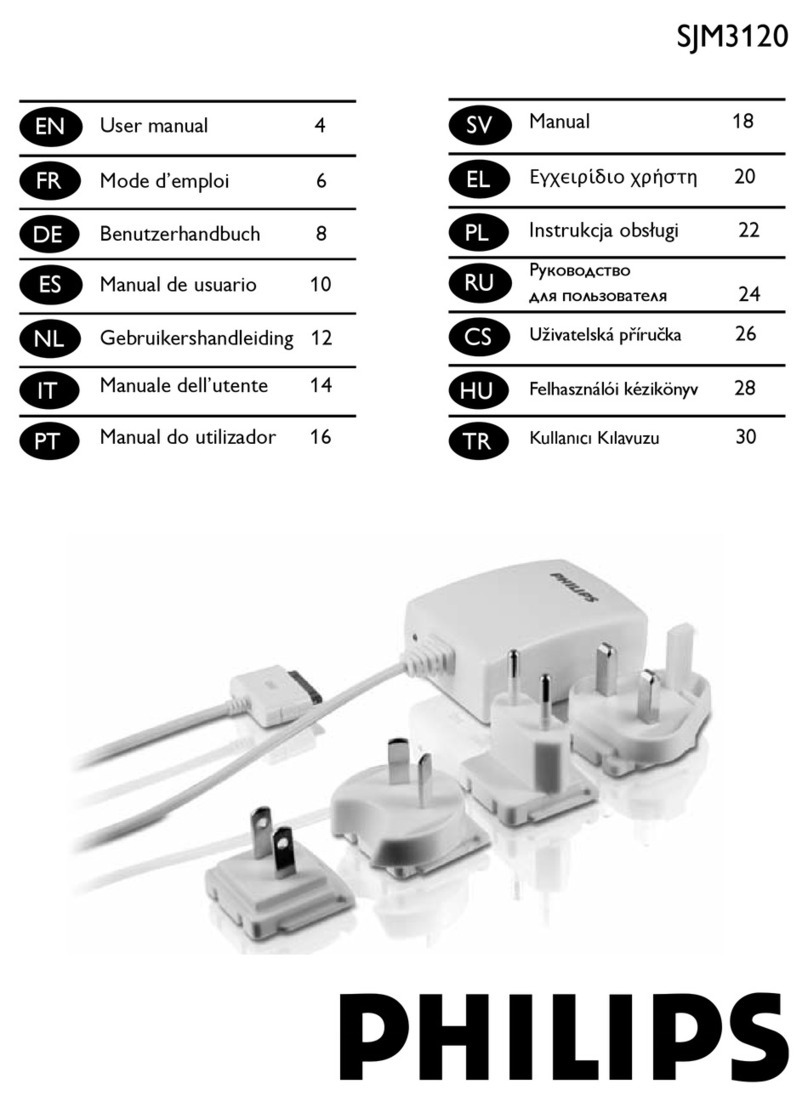
Philips
Philips SJM3120/10 user manual

Samsung
Samsung CY-SWC1000A user manual
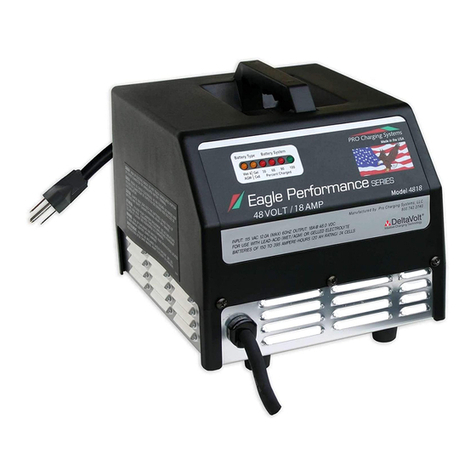
Pro Charging Systems
Pro Charging Systems 1212 Safety, installation and operating instructions
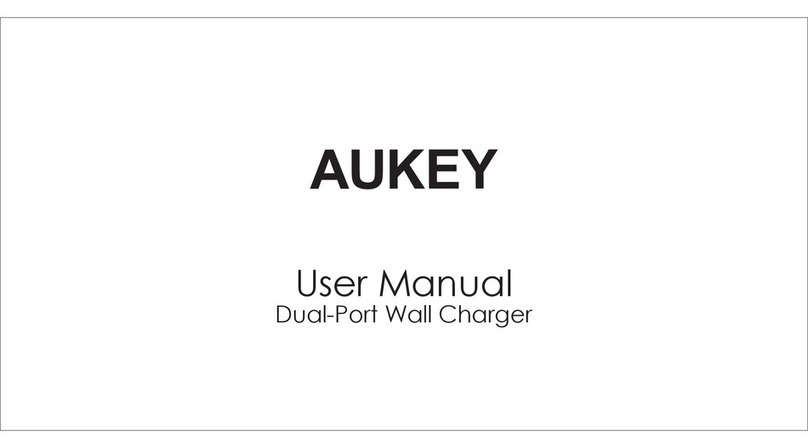
Aukey
Aukey PA-U50 user manual
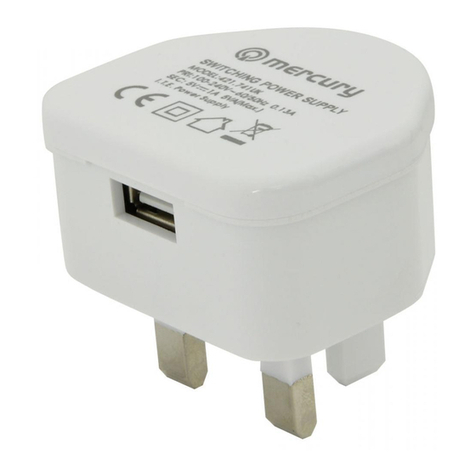
Mercury
Mercury USB741UK user manual
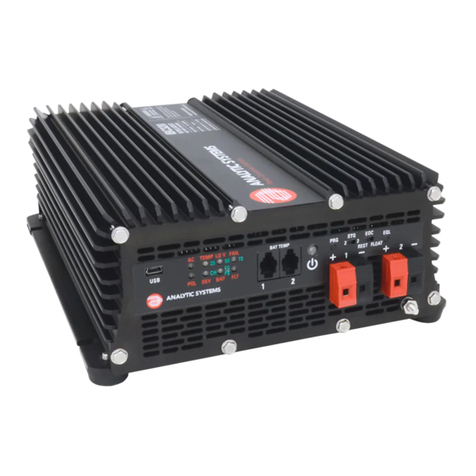
Analytic Systems
Analytic Systems IBC320 Installation & operation manual


